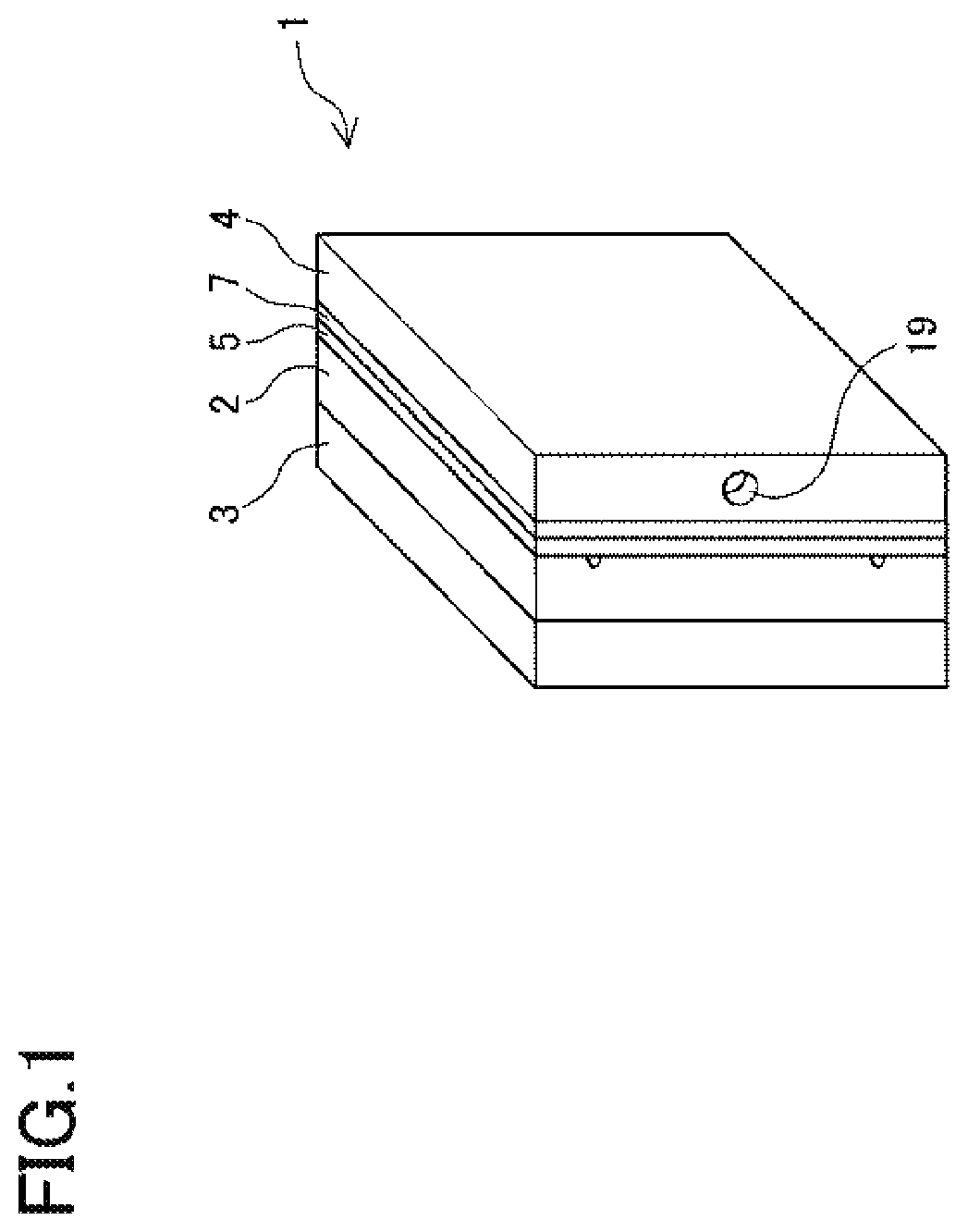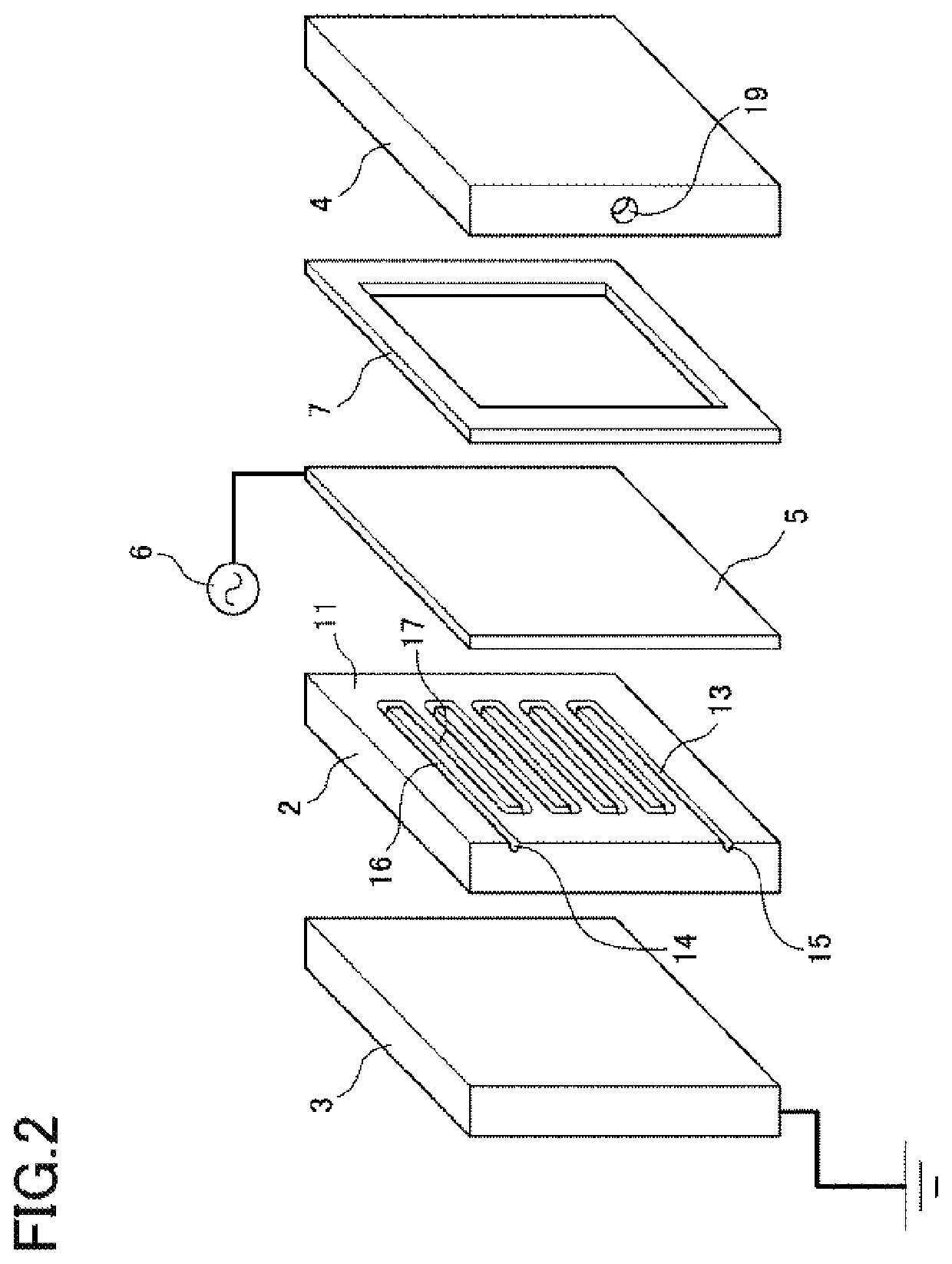Hydrogen generator
a technology of hydrogen generator and generating apparatus, which is applied in the direction of sustainable manufacturing/processing, final product manufacturing, and separation processes. it can solve the problems of low ammonia decomposition rate, high production apparatus cost as a whole, and deactivation of catalysts, so as to reduce the cost of production apparatus and achieve the effect of efficient decomposition of source gas into hydrogen, high yield and convenient us
- Summary
- Abstract
- Description
- Claims
- Application Information
AI Technical Summary
Benefits of technology
Problems solved by technology
Method used
Image
Examples
example 1
[0038]A preferred example of the hydrogen generating apparatus according to the present invention is described below with reference to the drawings. FIG. 1 is a schematic perspective view of the hydrogen generating apparatus 1 according to the present example. FIG. 2 is an exploded perspective view of the front, top, and right faces of the elements of the hydrogen generating apparatus 1. FIG. 3 is an exploded view of the front, top, and left faces of the elements of the hydrogen generating apparatus 1. The hydrogen generating apparatus 1 includes a dielectric body 2, an electrode 3, a hydrogen flow channel plate 4, a hydrogen separation membrane 5, a high-voltage power supply 6, and an insulating spacer 7. In the following descriptions, the surfaces of the elements shown on the right side of FIGS. 1 to 4 will be referred to as the right side surfaces. The right side surface of the dielectric body 2 corresponds to a first surface 11 of the dielectric body 2. Likewise, the surfaces of...
example 2
[0053]FIG. 6 shows a hydrogen generating apparatus 41 according to the present example. In the hydrogen generating apparatus 41, the hydrogen separation membrane 5 is grounded and functions as a grounding electrode. Meanwhile, the electrode 3 is connected to the high-voltage power supply 6 and functions as a high-voltage electrode. An insulating spacer 9 is arranged on the outside of the electrode 3. In the present example, the high-voltage power supply 6 applies a voltage to the electrode 3 to cause dielectric barrier discharge in the source gas flow channel 13 between the hydrogen separation membrane 5 and the electrode 3. This discharge transforms the ammonia in the source gas flow channel 13 into atmospheric pressure non-equilibrium plasma, making it possible to generate hydrogen at a high yield and separate it as high-purity hydrogen by the hydrogen separation membrane 5 for supplying to an external device.
example 3
[0054]FIG. 7 shows a hydrogen generating apparatus 51 according to the present example. The hydrogen generating apparatus 51 is characterized in that the source gas flow channel 13 is formed to pass through both the dielectric body 2′ and the electrode 3′. All other configurations are identical to those of the hydrogen generating apparatus 1. The start- and endpoints of the source gas flow channel 13 on the side of the dielectric body 2′ pass through the dielectric body 2′, and are open on the second surface. On the side of the electrode 3′, there are provided on the front surface of the electrode 3′ a source gas flow channel inlet 14′ and a source gas flow channel outlet 15′ which connect respectively to the start- and endpoints of the source gas flow channel 13 on the side of the dielectric body 2′. The configuration of the hydrogen generating apparatus 51 according to the present example is preferably applied to a particularly thin dielectric body 2′.
[0055]The configurations of t...
PUM
| Property | Measurement | Unit |
|---|---|---|
| temperature | aaaaa | aaaaa |
| thickness | aaaaa | aaaaa |
| thickness | aaaaa | aaaaa |
Abstract
Description
Claims
Application Information
 Login to View More
Login to View More - R&D
- Intellectual Property
- Life Sciences
- Materials
- Tech Scout
- Unparalleled Data Quality
- Higher Quality Content
- 60% Fewer Hallucinations
Browse by: Latest US Patents, China's latest patents, Technical Efficacy Thesaurus, Application Domain, Technology Topic, Popular Technical Reports.
© 2025 PatSnap. All rights reserved.Legal|Privacy policy|Modern Slavery Act Transparency Statement|Sitemap|About US| Contact US: help@patsnap.com



